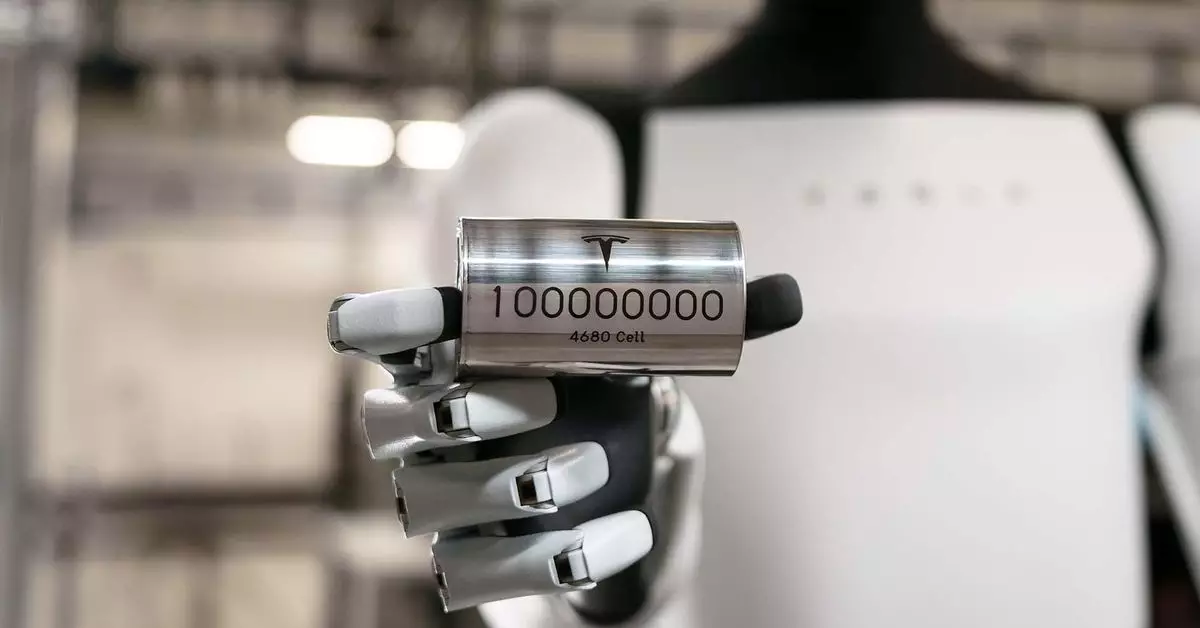In an industry that thrives on innovation and cutting-edge technology, Tesla has emerged as a leader in the electric vehicle (EV) market. Yet, while the company has made significant strides, it faces mounting skepticism regarding one of its most ambitious projects: the 4680 cylindrical cell battery. Robin Zeng, CEO of Contemporary Amperex Technology (CATL), the world’s largest EV battery manufacturer, has voiced strong concerns about Musk’s capabilities in overseeing this initiative. Zeng’s claims, marked by an assertion that Musk’s efforts will culminate in failure, raise critical questions about the direction Tesla is taking in its battery development strategy.
Zeng’s perspectives were underscored during a September 2023 meeting with Musk in China, where discussions reportedly turned heated. The CATL chairman didn’t mince words, emphasizing that Musk’s technical proficiency when it comes to battery technology is lacking. This assertion highlights a potential disconnect between Musk’s vision and the complex realities of battery engineering. While Tesla’s 4680 cells are engineered to deliver significantly higher energy capacity—roughly five times greater than traditional alternatives—the practical execution of this technology remains fragile.
Moreover, the ongoing pressure Musk has placed on his team to solve cost-related hurdles by the year’s end adds to the turmoil. It suggests a workforce operating under immense stress, which often yields less-than-ideal innovations. Drawing from Zeng’s insights, one must evaluate whether such aggressive deadlines enhance productivity or instead lead to rushed solutions that possibly compromise quality.
As Tesla navigates its battery challenges, it is essential to recognize the formidable competition posed by CATL. The latter’s lithium iron phosphate (LFP) batteries are increasingly found in various EVs, including not just Tesla models in China but also Ford vehicles such as the Mustang Mach-E and F-150 Lightning. LFP batteries, while traditionally offering shorter ranges compared to Tesla’s cylindrical cells, boast distinct advantages such as stability and safety, which are critical as the automotive industry grapples with battery fires and related issues.
Zeng’s acknowledgment of Musk’s strengths in areas like chip design and mechanical engineering does shine a light on the multifaceted talents of the Tesla CEO. However, the crux of the matter remains: without an equivalent grasp of battery technology, fostering innovation in this particular domain becomes increasingly precarious.
One of the predominant criticisms Zeng raised pertains to Musk’s tendency for overpromising outcomes and timelines—particularly in ambitious projects like Full Self-Driving technology. There’s an inherent risk in setting timelines that remain overly optimistic, as this could lead to disillusionment within Tesla’s workforce and among consumers awaiting groundbreaking technology. The reality of EV development often requires a more nuanced approach, where readiness and safety should precede aspirations of rapid advancement.
As Tesla continues its journey toward greater electrification and ambitious battery innovations, Robin Zeng’s candid assessments serve as an essential reality check. The balance between vision and practical implementation is fragile. Whether Musk can recalibrate his strategies to embrace the technical complexities of battery engineering may very well determine Tesla’s position in an increasingly competitive EV landscape.

